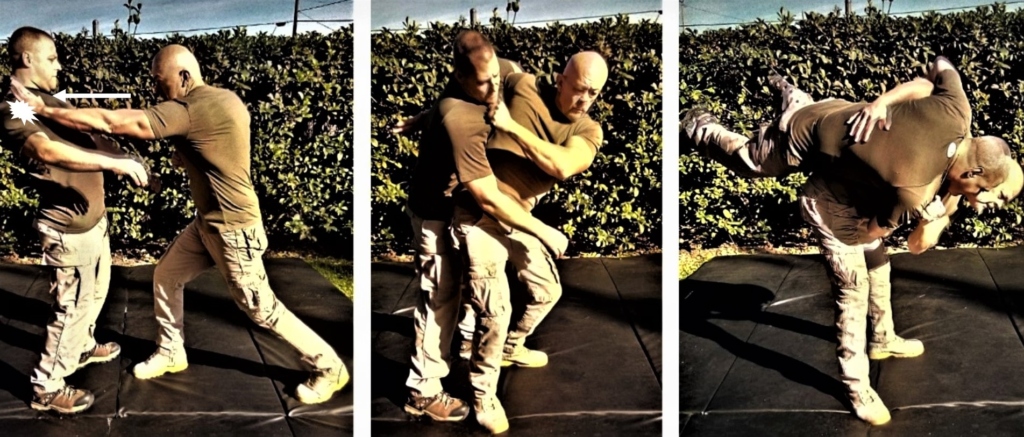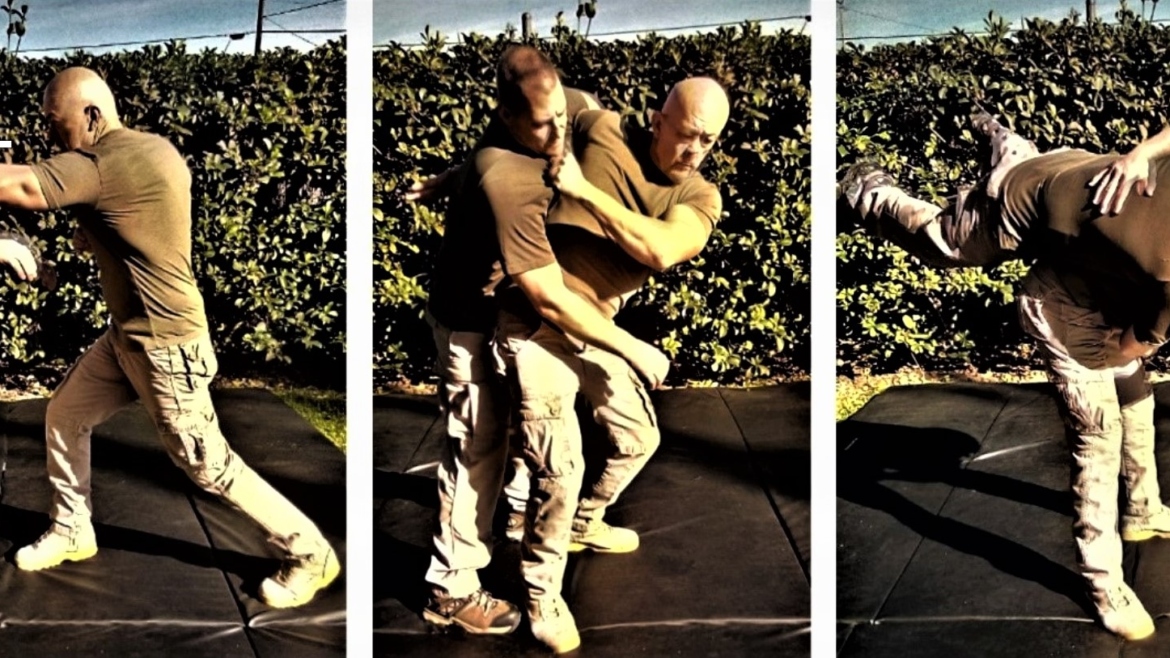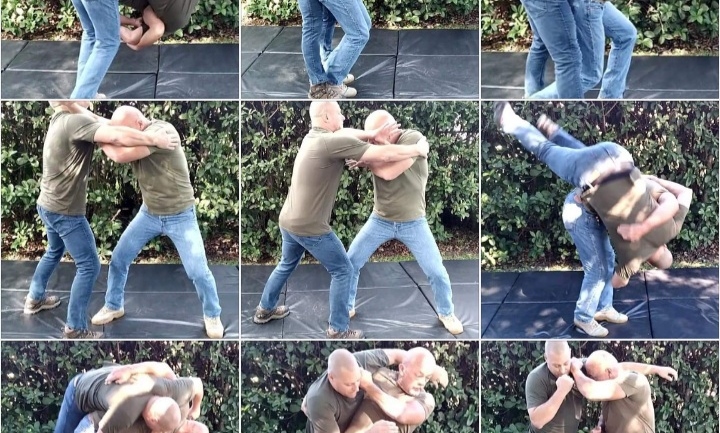The Hip Throw is not only a basic technique, it is one of the four major combat throws still seen in miliary combatives manuals to this day. There can be frequent opportunities to execute this throw in an actual fight. One can easily transition into a hip throw from various striking and grappling situations, when done correctly, it can throw an adversary into the floor with enough force that there is a good chance your opponent will be injured. The throw has the capability to be strong enough to actually end the fight.
The military combatives variation of O-Goshi (Hip Throw) has been successful in actual fights, as well as competition and sparring. The objective of the hip throw is to break your opponent’s balance by IMPACT and quickly and forcefully throw him to the ground. The best use of the hip throw when you can move in quickly not giving the opponent any time to react.
 (1) Either from a fighting stance or non-violent posture take a step forward with your right foot. At the same time STRIKE your opponent hard on his right shoulder with the heel of your left hand and grab his clothing at the area struck. The strike is delivered quickly and hard much like a rear hand straight punch/cross in boxing. This blow should be hard enough to completely disrupt your opponent’s balance and knock him back on his heels.
(1) Either from a fighting stance or non-violent posture take a step forward with your right foot. At the same time STRIKE your opponent hard on his right shoulder with the heel of your left hand and grab his clothing at the area struck. The strike is delivered quickly and hard much like a rear hand straight punch/cross in boxing. This blow should be hard enough to completely disrupt your opponent’s balance and knock him back on his heels.
(2) Pull on your opponent’s shoulder forcefully with your left hand as you step forward with your right foot on the inside of the right foot of your opponent. Pivot on the ball of your right foot while simultaneously placing your right arm around the opponent’s waist. The back of your heel should be next to the center or the toes of your opponent’s right foot. Step back with your left foot while pivoting the heel of your left foot should end up next to opponent’s big toe on his left foot. Pull him forcefully into you as you complete your pivot. Your knees should be bent, your belt line should be below his belt line. This movement leans your opponent over your right hip below his waist and leaves him partially suspended in this position.
(3) Straighten your legs quickly thrusting your hips into your opponent. Continue the pull with the left hand at the same time bend forward while finishing the pull forward and downward with both arms driving your opponent into the ground. Use the hip as the fulcrum, throwing the opponent over your right hip and NOT over the outside of your right leg.
(To do a left hip throw substitute the word “left” for “right” and “right” for “left”.)
How to train the hip throw
When in training strive for precision and accuracy. Do each PHASE of the throw with deliberate action. Once you have thoroughly learned the throws work for speed through constant practice. Combatives of any form is a perishable skillset so train, train, train.
PHASE ONE – You should enter and disrupt simultaneously. Entry and disruption should be accomplished in one move. As specified in instructions, take a step forward with your right foot. At the same time STRIKE your opponent hard on his right shoulder with the heel of your left hand and grab his clothing at the area struck.
PHASE TWO – Left hand gives a quick jerk bringing his head back over his toes as you enter. Keeping your knees bent step toward his right foot with your right foot and arm goes around the waist Phase two ends with opponent suspended on your hip.
Your arms should not be used to pick up and or load your opponent on your hips. (This generally means: 1.) You are going in too high; your knees aren’t bent enough and your hips are not lower than your opponent’s hips. 2.) You aren’t stepping deep enough). Your opponent should be already teetering on your hip BEFORE you straighten your legs.
PHASE THREE – Finish throwing your opponent to the ground and work Follow up and Recovery.
 Follow up and Recovery
Follow up and Recovery
DON’T FORGET – the prupose of a throw or takedown is to get the opponent to the ground as quickly as possible to gain the tactical advantage. After the throw your opponenet will be open to strikes such as kicks, stomps, hand blows and strikes with edged or impact weapons.
For law enforcement – control and restraint techniques such as arm bars, wrist locks and other joint manipulations into hand cuffing techniques may need to be applied.
Important – Follow up techniques whether lethal, non-lethal or restraint and control techniques must be applied rapidly as the fall from the throw itself may not be disabling.
VARIATIONS
There are several variations of this technique which can be utilized in different scenarios and circumstances addressing different types of attacks
1. Both of your opponent’s arms are pinned. Opponent’s right arm is hyper extended at elbow, his other arm controlled at the elbow.
2. Two on one – Grab opponent’s arm with both hands and use hip as the lever.
3. Place you right arm around opponent’s neck. Left hand locks in right arm.
4. Head and arm
5. Under hook with right hand left hand pins opponent’s right arm at elbow



